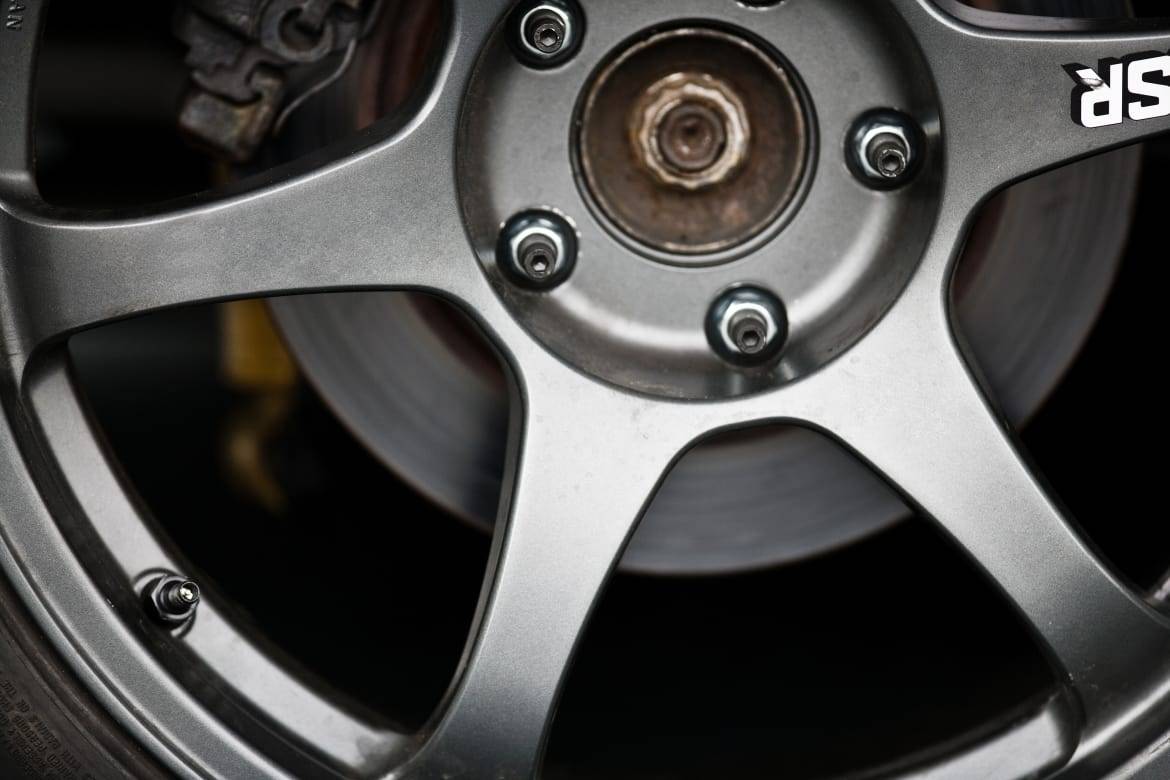Common Wheel Issues


CARS.COM — In many parts of the country, a bent rim is the most common problem drivers experience with wheels, especially during the late winter/early spring pothole season in the snow belt. That’s why dealers now sell tire and wheel repair insurance for new cars.
We’ve seen claims that alloy wheels are more prone to bending than heavier steel wheels, and we’ve seen opposing claims that steel bends more easily than alloy (a blend of aluminum and other metals). Suffice to say that any wheel can bend if it hits a pothole or curb hard enough.
Related: How Often Should Tires/Wheels Be Balanced?
Alloy wheels are now more common on new vehicles than steel because they enhance a vehicle’s appearance and performance (because they’re lighter). Lighter wheels usually means better handling, but they typically come with low profile tires that provide little cushion against bumps and potholes. That means that the larger your wheel diameter — say, 18 or 19 inches or more — the greater the risk that an alloy wheel could be bent or cracked by impacts. Or worse, the car’s suspension could be damaged, throwing off the steering alignment, which can lead to premature tire wear. Steel wheels are usually shod with higher-profile tires that provide more cushion against injury. They also tend to provide a better ride quality, as the tire sidewall is thicker and able to absorb bumps better.
As wheel size increases, the overall diameter of the tire has to shrink an equal amount to maintain clearance so the tire doesn’t hit the wheel well, brakes or suspension. That’s accomplished with a lower tire profile (or aspect ratio). If the standard wheel is 16 inches in diameter and the tire is 215/60R16, going to a 17-inch wheel could require a 225/50R17 tire. A key difference is that the aspect ratio changes from 60 to 50, meaning the height of the sidewall shrinks to 50 percent of the width of the tread; the smaller sidewall increases the chance that road hazards can damage the wheel.
Alloy wheels can also suffer pitting and corrosion from exposure to road salt, moisture and over-aggressive cleaning that wears off the clear-coat paint finish. They can also discolor over time from accumulated brake dust or general neglect. Alloy wheels are exposed to physical damage, such as scraping a curb when parking (the dreaded “road rash”); steel wheels are often protected by plastic wheel covers that provide a barrier against such physical damage.
Out of sight and out of mind, though, doesn’t mean steel wheels are safe and sound. Dirt, brake dust and moisture can build up behind the wheel covers and cause rust. That corrosion can spread to other parts of the driveline as well, such as the axle hubs and wheel studs.
Corrosion is more than an appearance issue. Tires can develop a slow leak if the tire bead can’t tightly seal against the wheel because the wheel rim has corroded too much. Sometimes the wheel might not seat properly on the hub, again causing tire wear and other wheel alignment issues.
Whether an alloy wheel is more susceptible to damage than a steel wheel isn’t a slam dunk, but the cost of replacing one is. Most steel wheels can be replaced for less than $100. Many factory alloy wheels or good quality aftermarket wheels cost twice that, with some running several hundreds of dollars.
One solution to the damage issue: Many owners choose to swap wheels in winter months, mounting snow tires on cheaper black steel wheels while keeping their low-profile performance tires on the original alloy wheels. If you plan on mounting snow tires anyway, this is often not a bad option, as the cost of swapping tires on and off existing wheels each season at a tire shop can easily surpass the initial cost of buying and mounting snow tires on cheap steel wheels, and just changing them yourself over the course of a couple of seasons. Those steel wheels and snow tires are often sold in a smaller diameter size, meaning that the sidewall will be taller for the snow tires, better cushioning the car or truck during pothole season.
Cars.com’s Editorial department is your source for automotive news and reviews. In line with Cars.com’s long-standing ethics policy, editors and reviewers don’t accept gifts or free trips from automakers. The Editorial department is independent of Cars.com’s advertising, sales and sponsored content departments.

Contributor Rick Popely has covered the auto industry for decades and hosts a weekly online radio show on TalkZone.com.
Featured stories




